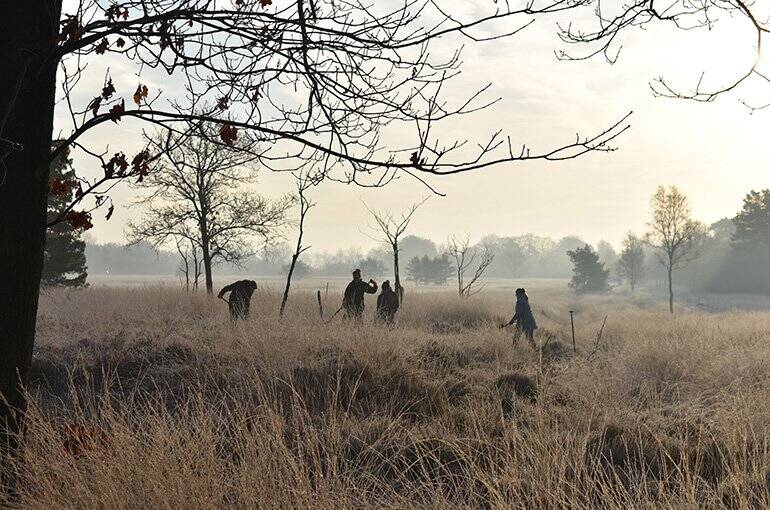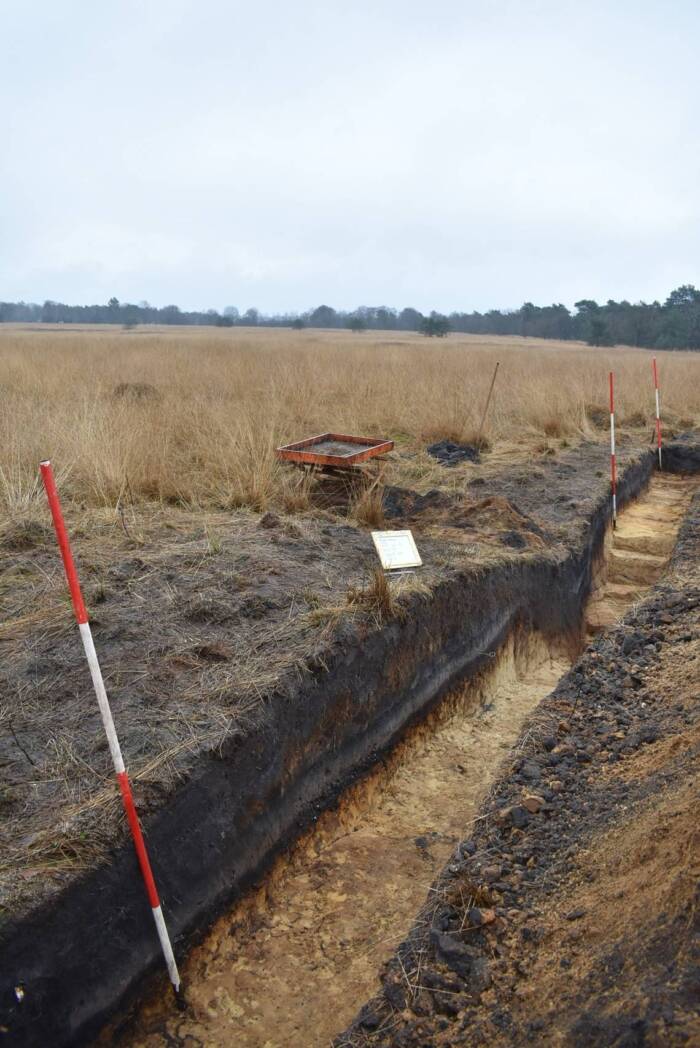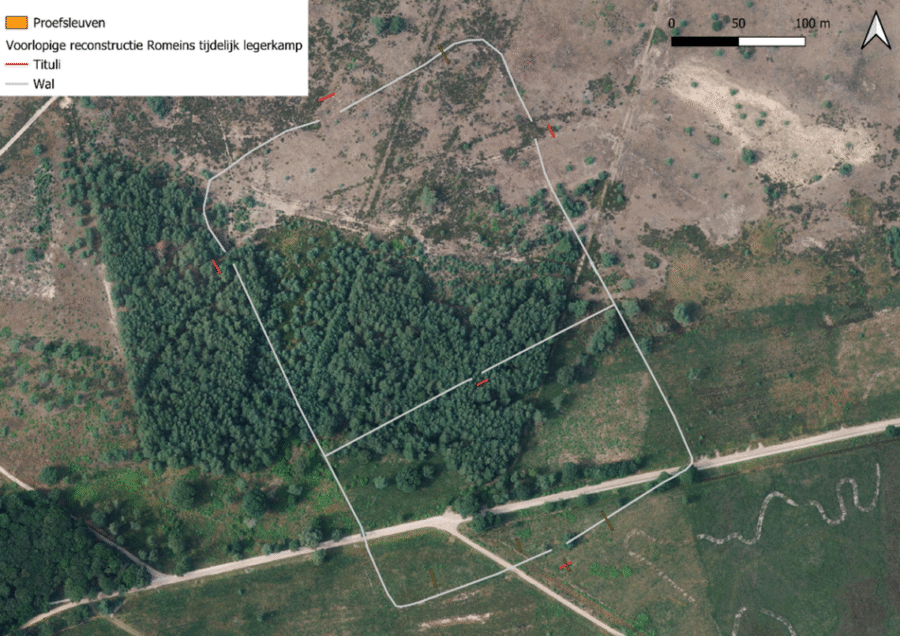Spanning 22 acres, this sprawling site located in the forest hamlet of Hoog Buurlo is one of just four of its kind ever found in the Netherlands.

Constructing the LimesStudents and professors at the Hoog Buurlo Roman military camp site.
A group of university students working in the Netherlands have located a unique ancient Roman military camp, one that existed beyond the northern border of the Roman Empire.
The students are studying at Utrecht University, where they are taking part in a project known as Constructing the Limes, alongside archaeologists from various institutions. Led by Utrecht University’s Saskia Stevens, the goal of the project is to examine the nature of borders in history, particularly focusing on the Lower Germanic Limes, which once served as the Roman Empire’s northern boundary.
During their study, the students found a “remarkable” camp that sat beyond the Roman Empire’s northern frontier, an incredibly rare discovery the likes of which has only been made a handful of times.
A Rare Roman Military Camp Found Beyond The Bounds Of The Empire In The Netherlands

Constructing the LimesAn excavation trench at Hoog Buurlo.
The discovery was announced in a statement from Utrecht University, describing the camp as a 22-acre temporary military outpost with a roughly nine-foot-wide defensive rampart, a ditch, and several entrances.
Most likely, it had been used as a marching camp, only inhabited by soldiers for a few days at a time as they traveled. The camp once stood near Hoog Buurlo, probably as a stopover en route to another camp at Ermelo-Leuvenum, about a day’s march farther along.
“Only four such temporary Roman camps are known in the Netherlands,” Stevens said. “Through the C-Limes project, we are particularly interested in these kinds of camps because they provide valuable insights into Roman military presence and operations in frontier regions.”

Constructing the LimesA portion of the camp’s defensive moat.
While few examples of these sorts of camps are found in the Netherlands, dozens have been identified across Germany and parts of Britain.
Of course, if the camp had been easily spotted from the surface, it would have likely been discovered ages ago. But as Stevens explained to the Miami Herald, much of what the team discovered was lying beneath the surface — and it took a clever algorithm and LiDAR to identify it.
How Utrecht University Students Discovered The Roman Camp At Hoog Buurlo

Constructing the LimesAn aerial reconstruction of the camp.
Jens Goeree, a student at Saxion University of Applied Sciences, had “developed a computer model” to predict the location of Roman military camps. Using that model, Goeree predicted that a camp might exist near Hoog Buurlo — and professors and students with the C-Limes project decided to investigate.
Looking at aerial photographs of the site, C-Limes students scanned the site with LiDAR and found traces of ancient Roman walls, a moat, and several trenches. “All you can really see above ground are some very subtle variations in height,” Stevens said. “The traces are mostly underground.”

Constructing the LimesA section of a Roman military harness, one of the few artifacts recovered at the site.
Following this lead, they traveled to the site and used metal detectors to scan the area, as well as excavating “several trial trenches.” According to Stevens, they found “few artifacts,” but the traces that were there confirmed the presence of a Roman military camp dating back roughly 1,800 years, roughly two centuries before the fall of the empire.
The site itself was around 15 miles north of the empire’s border.
While there may not have been any notable artifacts found at the site, Stevens noted that discoveries such as this “help us understand the routes taken by Roman troops and show how the Romans made extensive use of territories beyond the formal boundaries of their Empire.”
After reading about how students helped to find this Roman campsite, learn about the Roman military punishment known as decimation. Then, read the fearsome stories of 11 Roman gladiators.





